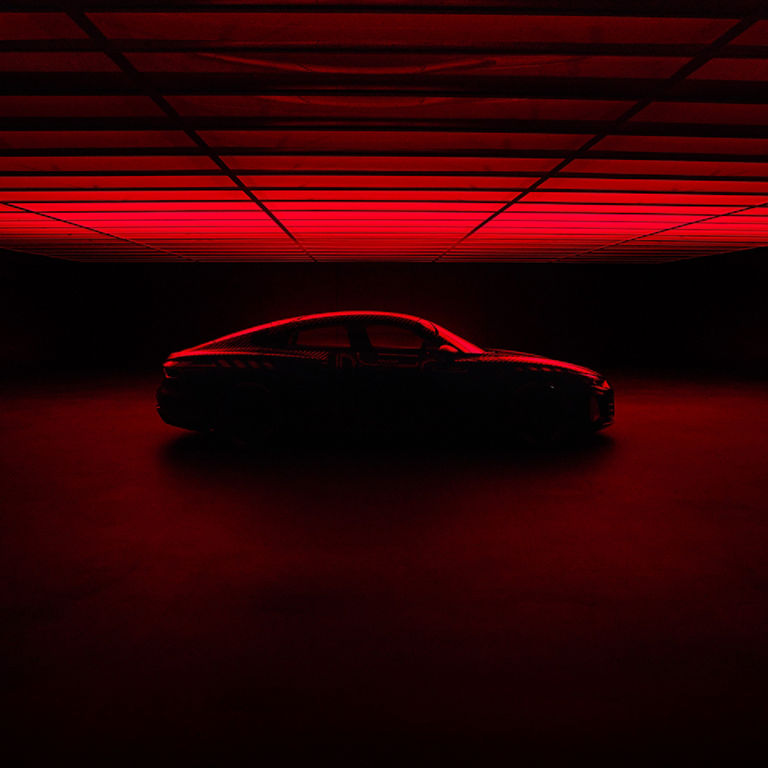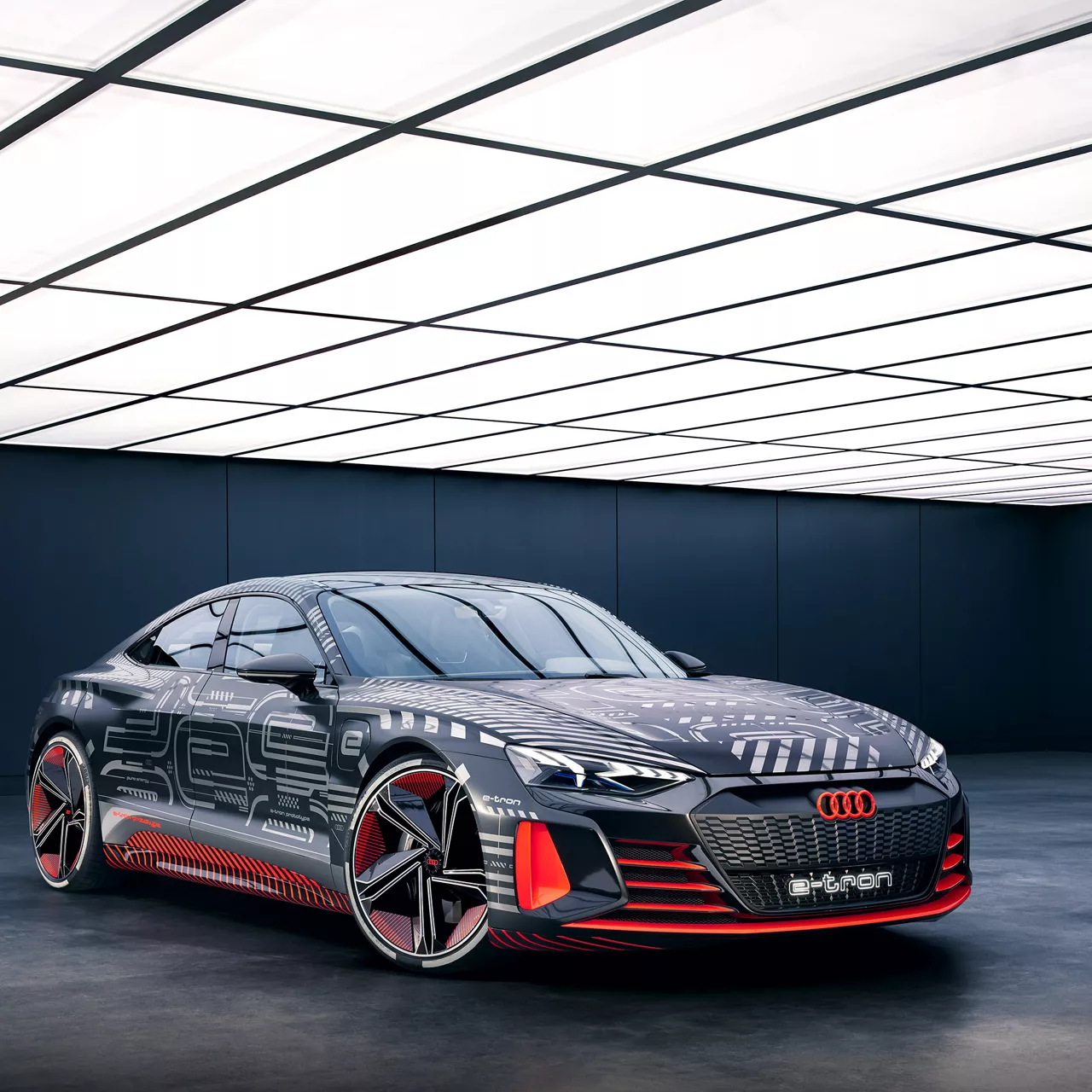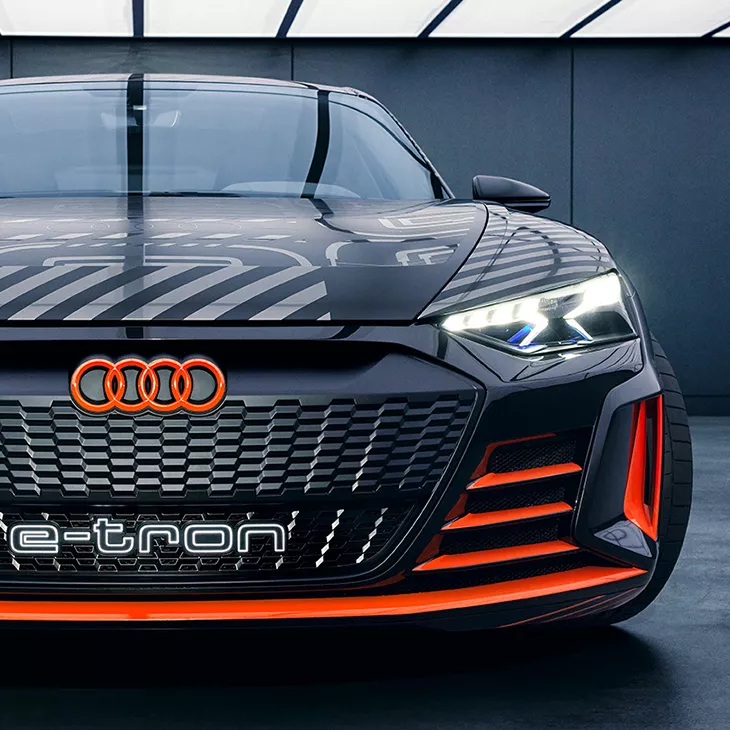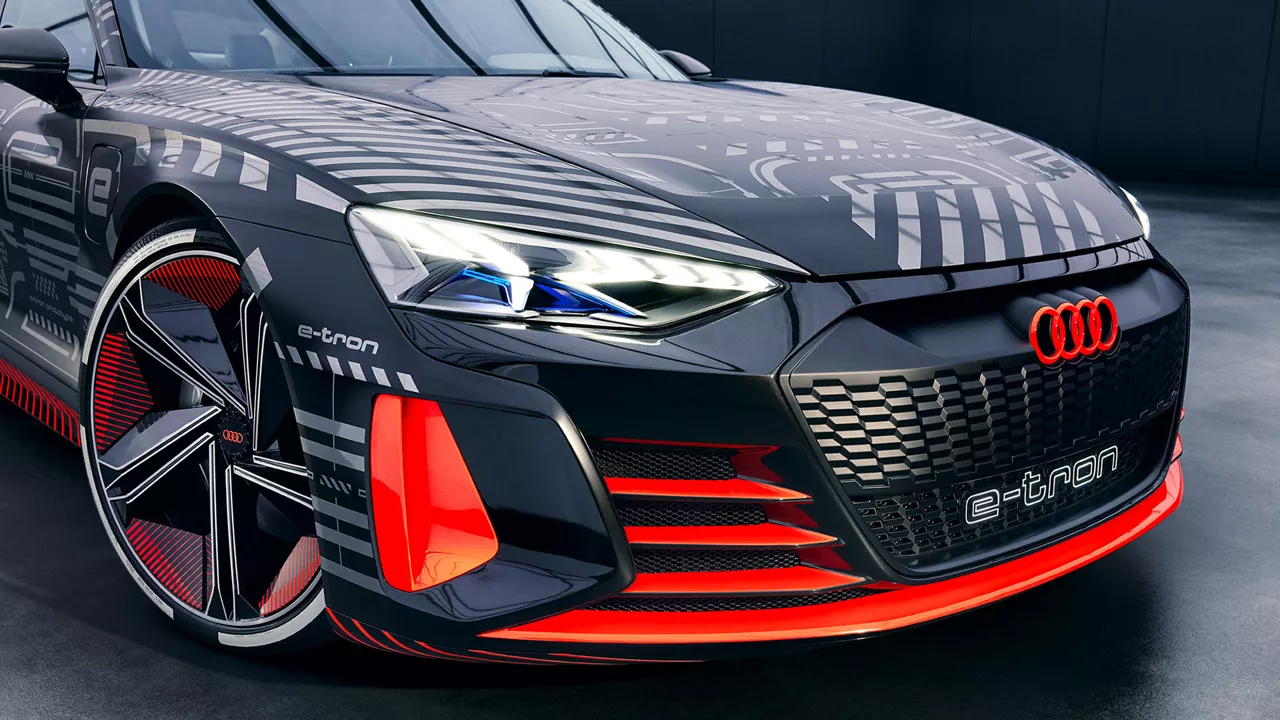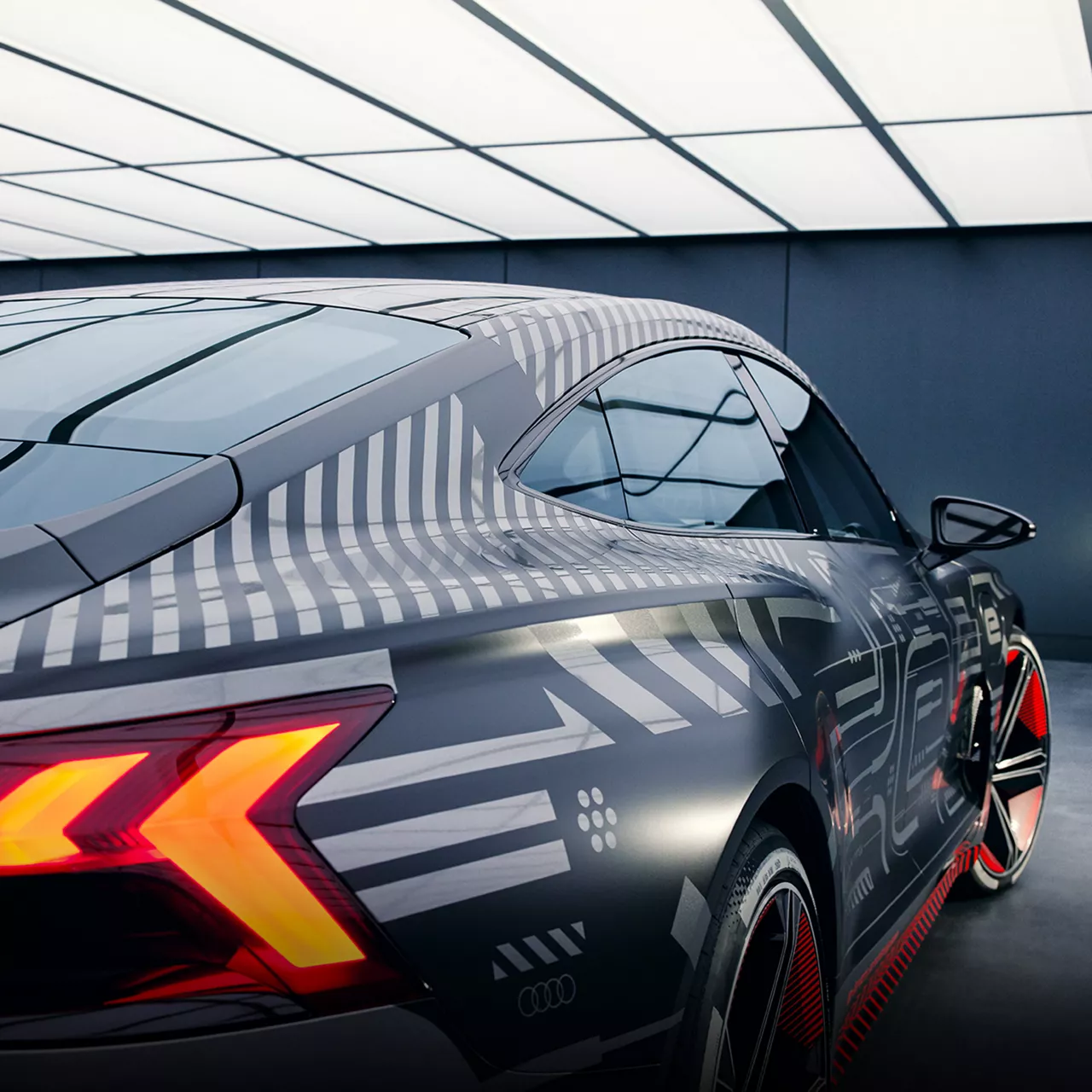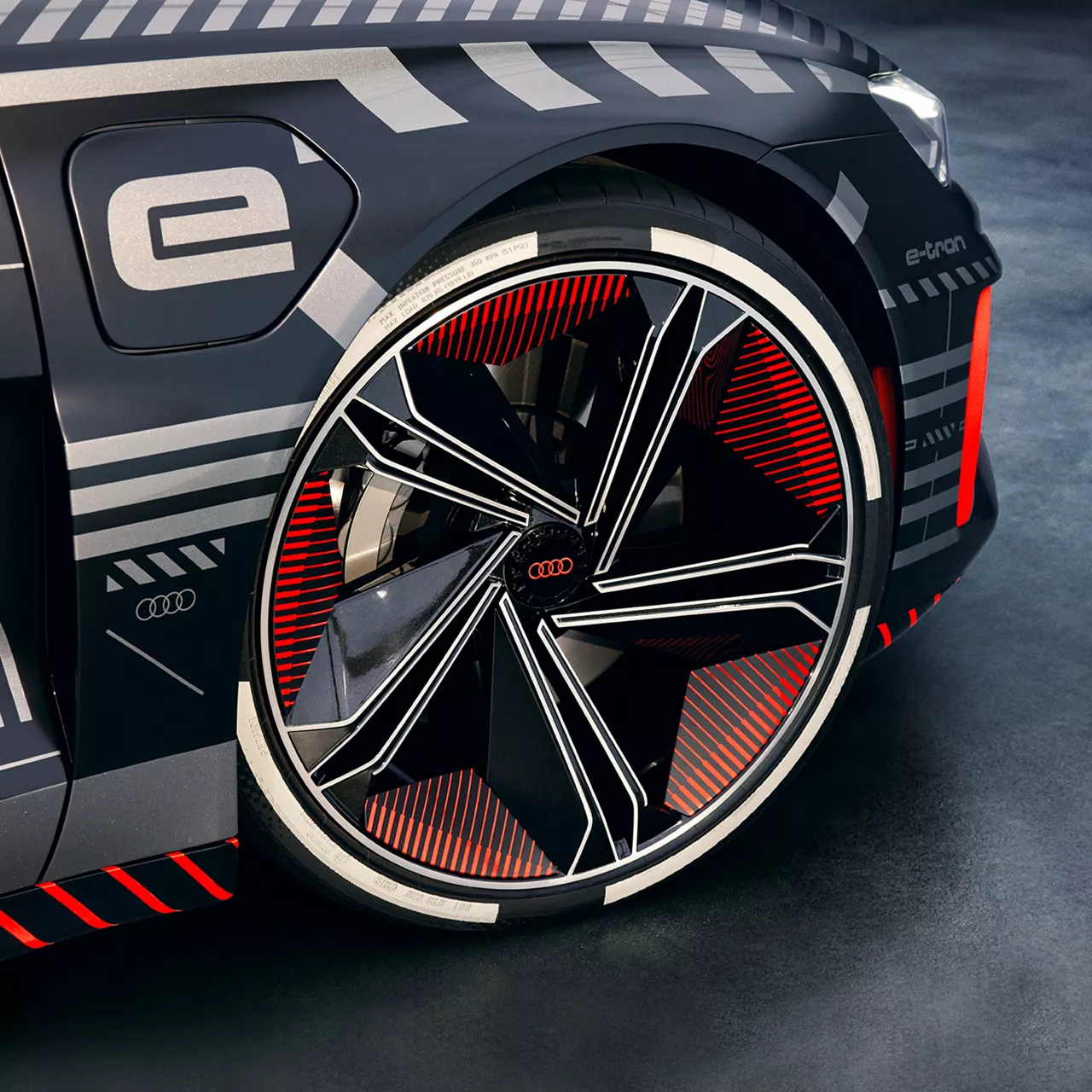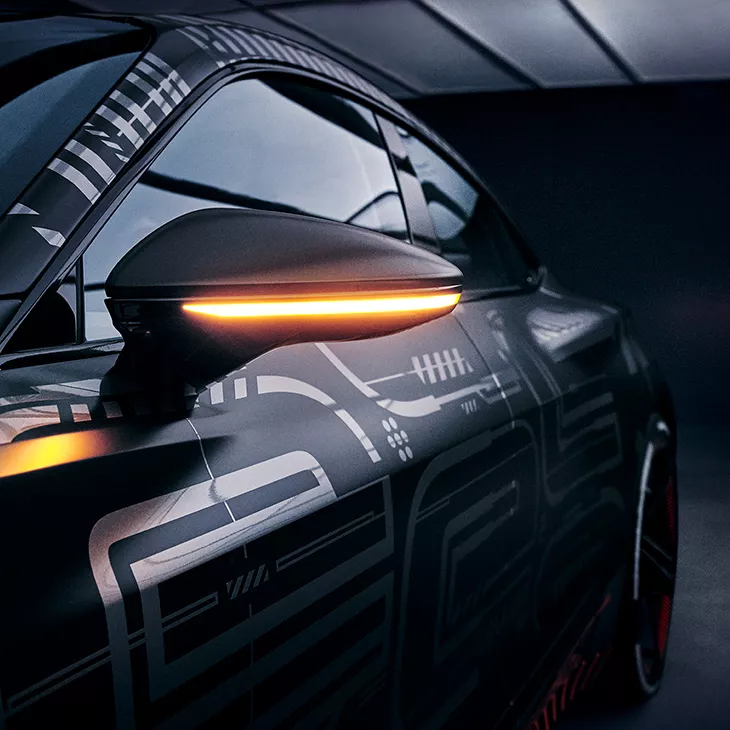The Audi e-tron GT concept¹ traces an arc into the future. As a four-door coupé with a long wheelbase, it features the proportions of a classic gran turismo cast in a progressive Audi design. Ensuring the driving performance of a sports car is the drive of the future: fully electric – including the quintessential Audi quattro all-wheel drive.
